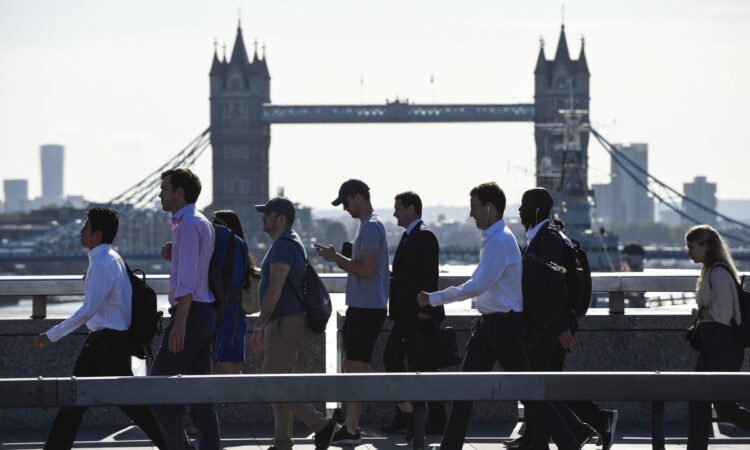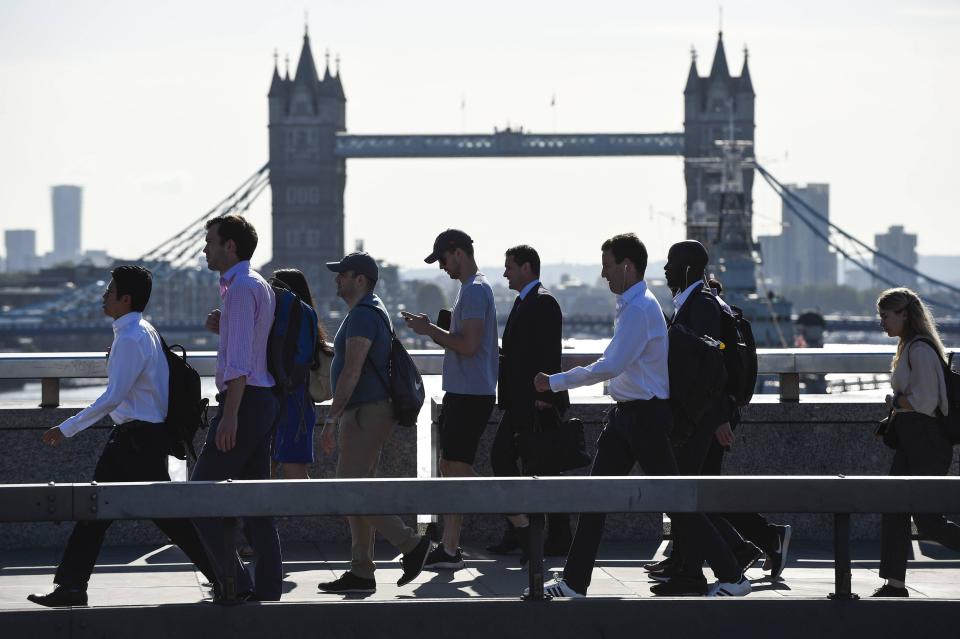

Wages in the UK have grown faster than expected, official figures show, complicating the prospects of an interest rate cut by the Bank of England (BoE) in June.
Annual pay growth excluding bonuses averaged 6% between January and March, according to figures from the Office for National Statistics (ONS), unchanged from last month. Including bonuses, pay growth came in at 5.7%, also unchanged from last month.
Economists had been expecting declines in both readings. The BoE is monitoring for any signs that Britain’s still strong wage growth could revive high inflation.
Real pay increased to 2.4% after taking inflation into account, which was the highest since the three months to August 2021.
The Bank of England voted to leave interest rates on hold last week but suggested that progress on key pieces of data, including wage growth, could pave the way for cuts to begin in June.
“A change in Bank Rate in June is neither ruled out nor a fait accompli,” Andrew Bailey, governor of the Bank said after last week’s decision.
Private sector regular pay — a key metric for the BoE — eased slightly to 5.9% from 6.0% in the three months to February.
“Earnings growth in cash terms remains high, with the recent falls in the rate now levelling off while, with inflation falling, real pay growth remains at its highest level in well over two years,” ONS director of economic statistics, Liz McKeown, said.
Unemployment, meanwhile, rose to 4.3%, compared to the previous estimate of 4.2%.
“We continue to see tentative signs that the jobs market is cooling, with both employment from our household survey and the number of workers on payroll showing falls in the latest periods,” McKeown said.
“At the same time the steady decline in the number of job vacancies has continued for a twenty-second consecutive month, although numbers remain above pre-pandemic levels.
“With unemployment also increasing, the number of unemployed people per vacancy has continued to rise, approaching levels seen before the onset of COVID-19,” she added.
Chancellor Jeremy Hunt said: “This is the 10th month in a row that wages have risen faster than inflation, which will help with the cost-of-living pressures on families.
“While we are dealing with some challenges in our labour supply, including pandemic impacts, as our reforms on childcare, pensions tax reform and welfare come online I am confident we will start to increase the number of people in work.”
Watch: Bank of England holds rate at 16-year high, signals looming cut
Download the Yahoo Finance app, available for Apple and Android.






